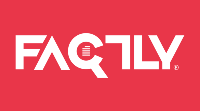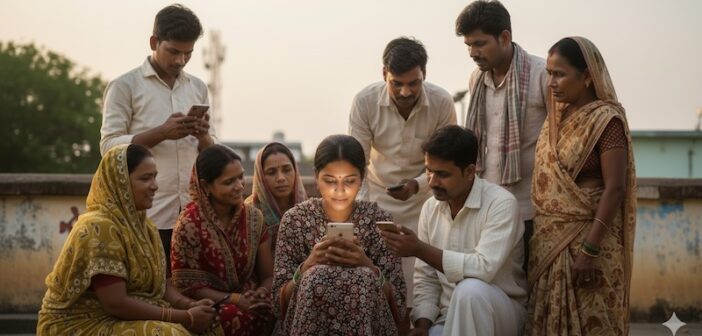TL;DR: India’s internet subscriber base continues to grow, with rural users up 44% (from 293.09M in June 2021 to 423.39M in June 2025) and urban users up 27% (from 455.98M to 579.46M). Reliance Jio dominates with 497M subscribers, followed by Airtel and Vodafone Idea. However, recent tariff changes, particularly the removal of ₹249 entry-level 1GB/day plans, have sparked affordability concerns for low-income and rural users. The Telecom Regulatory Authority of India (TRAI) is reviewing the matter.
Context
Over the past five years, India has seen a digital revolution, with internet connectivity becoming vital for education, healthcare, commerce, and governance. Government initiatives and private sector investment have significantly expanded access, especially in rural areas.
On 19 August 2025, Jio and Airtel, together holding 75% of the market, have discontinued their most affordable plans costing ₹249 for 1GB/day:
| Telecom Operator | Old Plan | New Plan |
| Reliance Jio | ₹249 for 28 days (1GB/day) | ₹299 for 28 days (1.5GB/day) |
| Bharti Airtel | ₹249 for 24 days (1GB/day) | ₹299 for 28 days (1GB/day) |
This move has hit rural and low-income households hardest, as many relied on these plans for basic connectivity. The Department of Telecommunications (DoT) has reportedly asked both companies to justify the changes and directed Telecom Regulatory Authority of India (TRAI) to review their impact on consumers.
Who Compiles This Data?
TRAI publishes comprehensive data on India’s internet subscriber base through its annual report, “The Indian Telecom Services Yearly Performance Indicators.” The report tracks subscriber growth (across wireline, wireless, and internet services), revenue and usage patterns, wireless data service trends, financial data and broadcasting services.
Where can I download Clean & Structured Data about Telecom Related Statistics?
Clean, structured, and ready-to-use datasets related to Year, State, Region, and Service Provider-wise Internet Subscribers can be downloaded from Dataful.
Key Insights
Rural Subscriber Growth Outpaces Urban
Rural areas have seen a 44% increase in internet subscribers over the past four years, from 293.09 million in June 2021 to 423.39 million by June 2025.
- The biggest jump was between June 2024–2025, adding 57.7M connections, fuelled by 5G expansion, smartphone adoption, and digital literacy programmes.
- However, recent tariff changes risk slowing this momentum, as low-income users may struggle to afford higher-priced plans.
Urban Market Shows Slower, Steady Growth
Urban internet subscriptions grew 27%, from 455.98 million to 579.46 million, between June 2021 and June 2025.
- Growth slowed significantly between 2022 and 2023, with just 0.72 million new connections, indicating market saturation.
- Urban expansion now depends less on new subscribers and more on higher data consumption and premium plans.
Jio Dominates, Airtel and Vodafone Idea Follow
As of 30 June 2025, of all the Internet Service Providers (ISPs), Reliance Jio leads the telecom market with 497.06 million subscribers, followed by Airtel with 316.99 million and Vodafone Idea with 134.76 million. BSNL holds 36.77 million subscribers, while ACT Fibernet has a much smaller base of 2.33 million as it only operates in the wired broadband space.
- Together, Jio and Airtel control 75% of India’s telecom market, highlighting strong duopoly control.
- Narrowband services continue to decline as users migrate to broadband and 5G plans.
Tariff Hikes and Plan Changes Impact Affordability
The discontinuation of the ₹249 entry-level plans marks a major pricing shift:
- Jio’s Position: Plans are now available only offline at Jio stores, positioned as part of a new market strategy.
- Airtel’s Position: The ₹249 plan was discontinued entirely from 20 August 2025, replaced with a ₹299 plan.
- This move risks widening the digital divide, especially for rural and low-income populations.
TRAI has the authority to step in if consumer interest is compromised, and a formal review is currently underway, according to media reports.
Why Does It Matter?
Internet access is essential for bridging India’s digital divide:
- Rural Progress at Risk: Steady rural growth could stall if basic plans become unaffordable.
- Policy Implications: Regulators must balance market growth with consumer protection.
- Digital Inclusion: Tariff decisions directly affect government initiatives like Digital India and rural connectivity programmes.
TRAI has the authority to intervene if affordability is compromised, though telecom companies currently retain the flexibility to set prices based on market forces.
Key Numbers (from 2021 to 2025)
- Rural Subscribers (in millions):
June 2021: 293.09 → June 2025: 423.39 - Urban Subscribers (in millions):
June 2021: 455.98 → June 2025: 579.46 - Top 5 Internet Service Providers (as on 30 June 2025, in millions):
Jio (497.06), Airtel (316.99), Vodafone Idea (134.77), BSNL (36.77), ACT (2.33)



